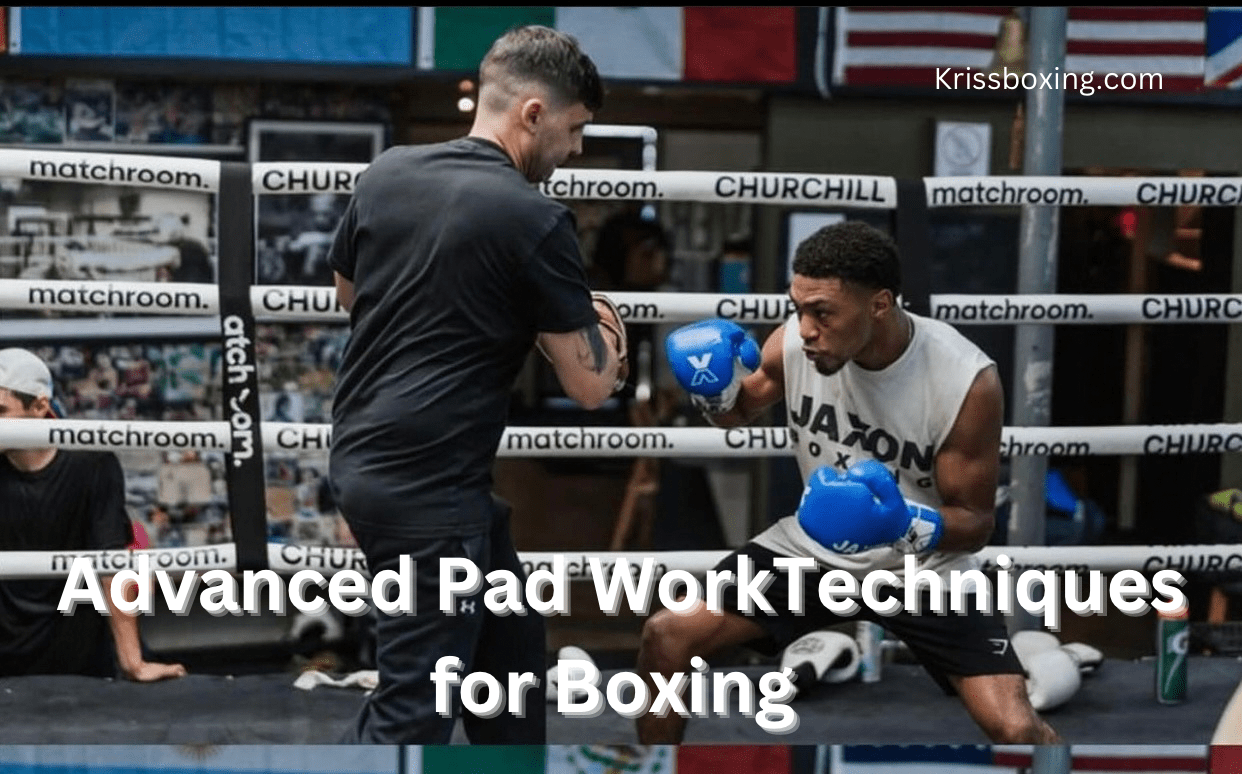When it comes to boxing pad work is an essential element of training it is the transition between the bag work and sparring.
These pad works are not just about delivering powerful blows but have to do with accuracy, rhythm, speed, and general boxers’ strategy.
The respective techniques are useful and applicable for the serious boxing athlete to enhance the manner an individual conducts him or herself within the ring.
Understanding the Use of Pad Work for Boxers
As for boxing, “pad work” is a kind of training session in which the boxer executes aerobic and anaerobic movements punching various focus mitts or pads held by a trainer.
The trainer is yelling out combinations or defense and the boxer answers with the correct punches, stepping, and head movements. Doing pad work enhances hand-eye coordination, the rate of traffic, and the general body technique giving the boxers muscular memory to enhance the speed, strength, accuracy, and forceful impact on the target.
It is daily incorporation that is routine part of training of the boxers to sharpen their skills and ready them for sparring and fighting.
10 Best Advanced Pad Work Techniques for Boxing
Precision Punching: Hitting the Right Spot
Saying that, undoubtedly, one of the key elements of effective work with the pads in its higher stage is accuracy. That is not only about punching but punching right. Accuracy preparation exercises enable boxers to hone themselves in on specific desirable zones that increase the chances of getting through to desired areas on the opponent.
This involves the trainer holding a pair of gloves in certain postures to mimic an opponent’s head or other vulnerable areas such as the ribs, and the jaw, and the boxer has to punch on a particular point.
Combination Drills: Stringing Together Success
Other significant parts of advanced pad work are the combination drills. From this exercise, they can include sequences of punches to be delivered in rapid succession.
This is more of an objective of practicing to attempt to get the combinations flowing smoothly so that the individual punches are not weakening or Altered.
It is possible to apply these drills depending on the style of the boxing – from the continuous combination of jabs, hooks, and the uppercut to focus on the body shots and then counterpunch.
Slip and Counter: Defense and Offense in Harmony
Boxing entails the ability of the advanced boxer to dodge punches and counter the opponent with an immediate punch. It develops not only a defensive boxer’s capability but also an offense’s skills that allow one to pump the opponent’s weaknesses.
When the trainer feints an attack, the boxer skillfully avoids the imaginary blow and returns the blow quickly with precision.
Angle Drills: Mastering Movement and Positioning
Incorporation of angles is crucial in boxing and that is why angle drills entail footwork and positioning. The pads are used to simulate an opponent and the boxer first practices movement in front of, sideways, and from behind the pads at various angles while maintaining stance and readiness.
It can teach the boxers how to make spaces for strikes of their own while also mastering the art of not being a stationary target.
Body Shots: Targeting the Core
The body shots, especially, are very popular but they can be very useful and tire the opponent. Some of the advanced pad work covers a special pad that targets the trainees on how to land very powerful and accurate body shots.
These drills allow the boxer to put the energy into the punches targeting the liver, ribs, or solar plexus to drop an opponent’s energy and slow him/her down.
Reflex Drills: Anticipating the Opponent’s Moves
Reflex drills can therefore be simply defined as a practice routine that is aimed at enhancing the speed of the response of a particular boxer to the actions of an opponent. In these drills, the trainer suddenly and at a random position alters the position of the pad and the boxer has to respond and punch.
This not only enhances incredibly one’s response time but also the capacity to decipher an opponent’s strategies.
High-Low Combinations: Switching Targets
High-low combination drills are an effective teaching aid for a trainer to be able to teach a boxer how to mix up his or her punches. If the boxer switches from the head position to the body position, he or she can frustrate or disorient an opponent.
Such drills are useful in the preparation of the ability to switch between the types of punches in a more fluid motion.
Counterpunching: Turning Defense into Offense
Counterpunching is one of the most important aspects of boxing for any high-ranked boxer. In pad work, this technique is conducted when the trainer throws fake punches to which the boxer responds similarly.
This drill aims at the improvement of defensive reactions rather than teaching the boxer when he/she should counter-attack.
Power Punching: Delivering Devastating Blows
While precision and speed are the application’s valuable characteristics, power cannot be ignored. Power punching drills are designed to make the most of an attack with punches. Many of these exercises include throwing punches at the pads with all possible force, so that any particular blow may end the bout.
Conditioning Drills: Building Endurance
Conditioning is an important part of boxing and pad work can also be used as a method of improving stamina. It is comprised of high-intensity combinations and continued punching sets which make the boxer weary and retain power and accurate punches in their body.
This helps to condition the boxer for an actual fight throughout the length of the rounds.
Frequently Asked Questions
What is the purpose of advanced pad work in boxing?
Pad work at its higher level is aimed at increasing the accuracy, velocity, force, and reflexes of a pugilist, and replicating the real battle environment for better performance.
How often should I incorporate advanced pad work into my training?
As a level of intensity that is appropriate for professional level serious boxers pad work should be integrated into the regimen at least twice or thrice weekly depending on whether the training phase is general/technical specific or competition specific.
Can pad work replace sparring?
Although pad work is a good part of training, it cannot be as effective as sparring since sparring works in real-time with an opponent who provides real-time feedback crucial for preparation for a fight.
How can I improve my reaction time through pad work?
This should be done in combination with reflex drills that help in developing a fast manner of reacting to changes in the pad positions.
What are the benefits of focusing on body shots during pad work?
Focusing on body shots during the pad work will help the fighter in training in weakening an opponent’s core muscles, reducing their speed and thus, generating opportunities for other strikes.
Conclusion
To sum up, various sorts of pad sessions are as essential for any intent and profound boxer. Through practicing so many drills, ordinary boxers can benefit, including the accuracy and the speed of the blows, the power of the punch, in addition to the strategy that is used when in the ring.
No matter whether you are on precision punching, reaction drills, or conditioning, including these extra moves into your pad work training will assist you in becoming a better boxing athlete.


